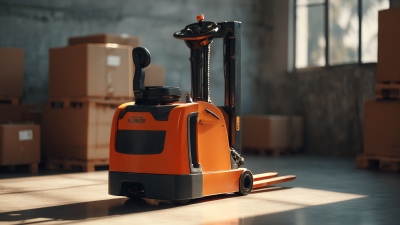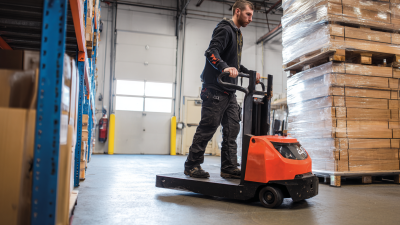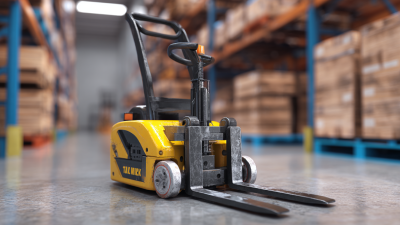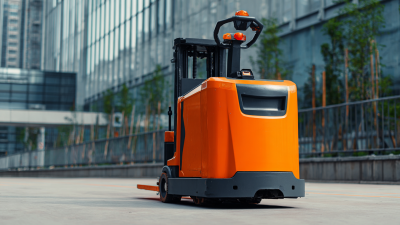Leave Your Message
In the fast-paced world of warehousing and logistics, the efficiency of your operations directly impacts your bottom line. According to a report by the Material Handling Industry of America, over 70% of warehouse operating costs are influenced by the selection of appropriate handling equipment.
 Among these, the Manual Hand Pallet Jack stands out as an essential tool, specifically designed to enhance productivity while minimizing manual labor. This versatile equipment allows operators to safely and effectively move goods, with models varying in capacity, size, and additional features.
As businesses strive for greater efficiency and cost-effectiveness amidst increasing consumer demands, understanding how to choose the right Manual Hand Pallet Jack becomes critical to optimizing warehouse operations. By harnessing the power of informed purchasing decisions, companies can improve workflow and ensure the safe transport of goods across their facilities.
Among these, the Manual Hand Pallet Jack stands out as an essential tool, specifically designed to enhance productivity while minimizing manual labor. This versatile equipment allows operators to safely and effectively move goods, with models varying in capacity, size, and additional features.
As businesses strive for greater efficiency and cost-effectiveness amidst increasing consumer demands, understanding how to choose the right Manual Hand Pallet Jack becomes critical to optimizing warehouse operations. By harnessing the power of informed purchasing decisions, companies can improve workflow and ensure the safe transport of goods across their facilities.
When selecting a manual hand pallet jack for your warehouse needs, there are several key factors to consider to ensure optimal performance and efficiency. First, you need to assess the weight capacity of the pallet jack. Different models can support varying loads, so it's crucial to choose one that can handle the maximum weight you anticipate lifting. Additionally, consider the fork length and width; longer forks can be more versatile but may not fit in all spaces, while wider forks offer better stability for larger pallets.
Another important aspect is the maneuverability of the pallet jack. Look for features such as ergonomic handles and the type of wheels used. Models with swivel casters allow for easier navigation in tight spaces, while polyurethane wheels tend to provide softer and quieter operations. Finally, evaluate the overall build quality and warranty options provided by the manufacturer. A durable, well-constructed pallet jack will not only improve operational efficiency but will also reduce the likelihood of repairs and replacements in the long run.
When selecting a manual hand pallet jack for your warehouse, prioritizing essential features can significantly enhance both efficiency and safety. A study by the Occupational Safety and Health Administration (OSHA) indicates that improper handling of materials accounts for a considerable percentage of workplace injuries. Thus, investing in a pallet jack with ergonomic handles can help reduce the strain on workers, ultimately fostering a safer environment. Look for models that allow for easy maneuverability and have a suitable lifting height to minimize the risk of injuries associated with heavy lifting.
Tip: Always consider the weight capacity of your pallet jack. According to the Material Handling Industry (MHI), using a jack that matches the load requirements is crucial for preventing equipment failure and ensuring optimal performance.
Additionally, safety features such as braking systems and stability controls cannot be overlooked. A report by the National Institute for Occupational Safety and Health (NIOSH) emphasizes that equipment equipped with advanced braking systems can reduce accidents and improve the overall workflow in a busy warehouse. Prioritize jacks that feature non-slip wheels and enhanced visibility to further promote safety and efficiency.
Tip: Regular maintenance of your pallet jack can drastically extend its lifespan and performance. Schedule inspections to identify wear and tear, ensuring your equipment remains in top working condition.
| Feature | Importance | Recommended Specifications |
|---|---|---|
| Load Capacity | Ensures safe handling of heavy loads. | Up to 5000 lbs. |
| Fork Width & Length | Fits various pallet sizes for versatility. | Width: 21" - 27", Length: 48" - 60". |
| Safety Features | Reduces risk of injury during operation. | Automatic brake and safety guard. |
| Ergonomic Design | Enhances operator comfort and reduces fatigue. | Adjustable handle height. |
| Wheel Material | Affects maneuverability and floor protection. | Polyurethane or rubber wheels. |
 When selecting a manual hand pallet jack for your warehouse, it is crucial to consider its weight capacity to ensure optimal performance and safety. The weight capacity of a pallet jack varies significantly across different models, typically ranging from 2,500 lbs to 5,500 lbs. Start by evaluating the heaviest loads you expect to handle regularly. This will help you choose a jack that not only meets current needs but also accommodates future demands, preventing potential overloading that could lead to equipment failure or safety hazards.
When selecting a manual hand pallet jack for your warehouse, it is crucial to consider its weight capacity to ensure optimal performance and safety. The weight capacity of a pallet jack varies significantly across different models, typically ranging from 2,500 lbs to 5,500 lbs. Start by evaluating the heaviest loads you expect to handle regularly. This will help you choose a jack that not only meets current needs but also accommodates future demands, preventing potential overloading that could lead to equipment failure or safety hazards.
Another key factor in ensuring the optimal weight capacity of your pallet jack is to assess the distribution of weight in your loads. Even a pallet jack rated for high weight limits can struggle if the weight is unevenly distributed. Ensure that pallets are loaded correctly, keeping heavier items at the bottom and centering weight evenly to maintain stability during transport. Additionally, regular maintenance checks and inspections can help prolong the life of your pallet jack and confirm that it is still capable of handling the intended loads safely and effectively.
To ensure the longevity and optimal performance of your manual hand pallet jack, it's crucial to implement effective maintenance practices. Regular inspections should be a fundamental part of your routine. Check the forks for any signs of wear or damage, as well as the wheels and the lifting mechanism. Keeping an eye on these parts helps identify potential issues before they develop into costly repairs.
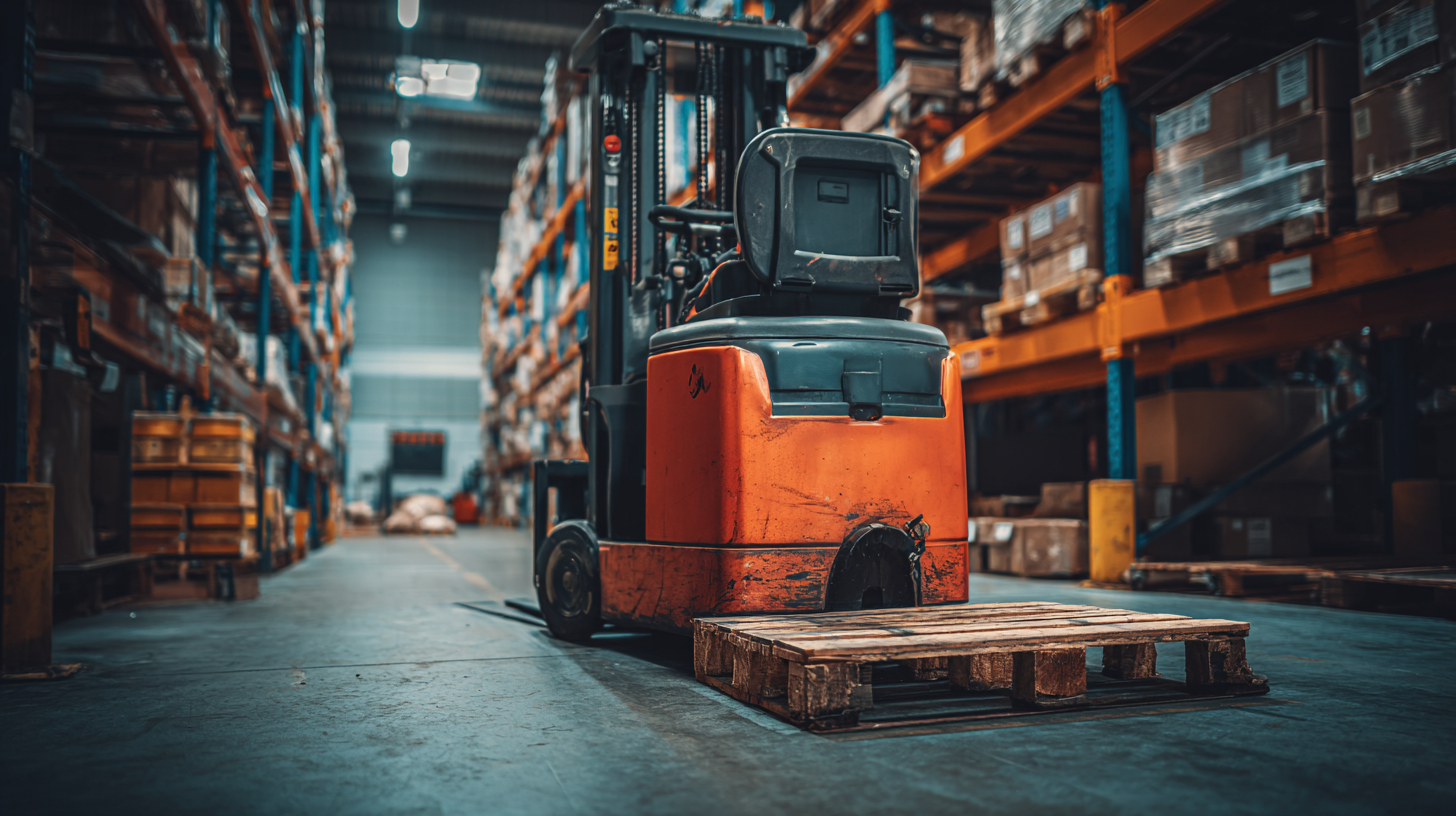
Lubrication is another key aspect of maintenance. Use a suitable lubricant on moving parts, such as the lift shaft and wheels, to reduce friction and prevent corrosion. This not only enhances the efficiency of the pallet jack but also maximizes its operational lifespan. Additionally, ensure that the jack is stored in a clean, dry environment when not in use, protecting it from dust and moisture that can lead to deterioration. By following these essential maintenance practices, you can significantly extend the life of your manual pallet jack and maintain high productivity levels in your warehouse.
When selecting a manual hand pallet jack for your warehouse, understanding the different types available is critical to meeting your specific operational needs. There are varied designs, such as standard, low-profile, and high-lift pallet jacks, each suited for different tasks. For example, low-profile jacks are ideal for handling pallets that sit lower to the ground, while high-lift jacks are perfect for lifting pallets to ergonomic working heights, reducing strain on employees.
Tip: Assess the height of the pallets you will be handling regularly. This can greatly influence your choice; selecting a jack that corresponds to your most common pallet heights ensures smoother operations.
Another important aspect to consider is the weight capacity of the pallet jack. Standard models typically carry loads up to 5,500 pounds, while heavy-duty options can accommodate even more. Depending on the nature of your goods, you may need a more robust option.
Tip: Always check the weight of your heaviest pallets before purchasing a jack. Choosing a model with a slightly higher capacity than your maximum requirement will help prevent wear and tear, ensuring longevity and reliability in your operations.
